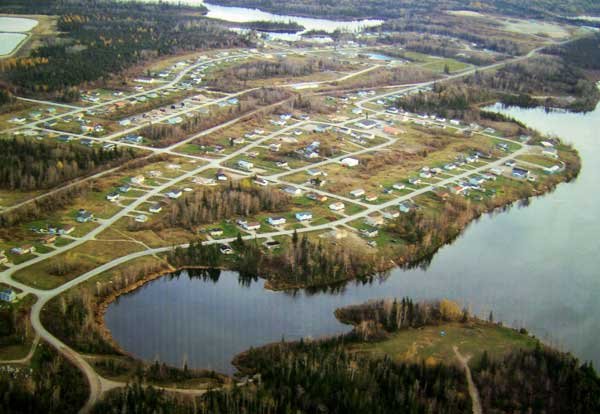Constance Lake First Nation is primarily the successor of the English River First Nation, which was considered an offshoot of the Albany Band by the commissioners at the time of signing and conclusion of Treaty 9. In 1901, a Canadian census recorded that 85 people were living at English River.
Shortly after Treaty 9 was concluded, the commissioners arrived at English River on July 27, 1905. They decided that the Indians at English River were really a branch of the band residing at Albany, and as such, it was not necessary to have them sign the Treaty separately – they were already Treaty beneficiaries. However, the people living there were given their own reserve at English River, described as follows:
“On the Kenogami or English River in the Province of Ontario, beginning at a point three miles below Hudson Bay Post on the North side of the River known as English River then north a portage of 3 miles and of sufficient depth to provide 1 square mile for each family of five upon the ascertained population of the band.”
The area to be set aside at the time was to be 12 square miles. This 12 square-mile reserve was included in the schedule of reserves attached to Treaty 9. Its selection was approved by Ontario in 1907 through an Order in Council, but it was not surveyed or set aside as a reserve until 1912.
The people at English River did not elect their first Chief until 1921. Between 1925-1940, many families from English River re-located to Pagwa (nearby the present-day Constance Lake reserve) to follow employment opportunities. People from Fort Albany and Moose Factory also moved to Pagwaaround that time.
The historical report cites correspondence between a reverend and Indian Affairs. Reverend Clarke requested funding for a school at Pagwa but received the response that Indian Affairs did not fund schools off reserve. As such, Clarke began to lobby for a reserve to be established at Pagwa, rather than forcing the Indians to return to the reserve at English River “which was uninhabitable”.
A report in May 1940 documented that the majority of the English River Band resided at Pagwa, but it was not until 1943 that Indian Affairs began to contemplate creating a new Band of Indians for those living at Pagwa.
Inspector Arneil surveyed the area to find a suitable area for a reserve and chose Calstock. He also recommended that those members of Albany and Moose Factory (Attawapiskat) Bands who resided atPagwa should be transferred to the new Band. So, the new Band absorbed essentially the whole of the English River Band and also members of the Albany and Moose Factory Bands who lived nearby. As such, the request was made to Ontario for land to accommodate “a future population where there would be home sites, garden lands, sufficient pasturage for a cow or a couple of goats for each family.”
The province tentatively agreed to provide land and include the water body of Constance Lake. There was also mention of returning the English River Reserve to the province. However, this never took place because the province did not feel that the land had any value. On February 11, 1944, an Order in Council was passed regarding the purchase of this land for the new Constance Lake Band.
A survey of the Calstock Reserve, now named Constance Lake, was completed on September 21, 1944, and it was vested in Canada on January 9, 1945. On March 16, 1945, an Order in Council was passed setting aside the land as an Indian Reserve for the use and benefits of Constance Lake First Nation.
Today, Constance Lake First Nation is located in the District of Cochrane, 32 km. west of Hearst, Ontario. Its population is 1470 members. The reserve is 7686 acres in size and includes Constance Lake itself.
